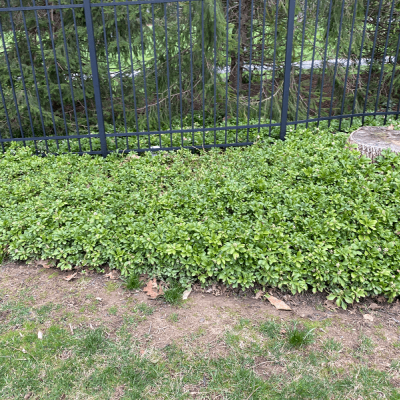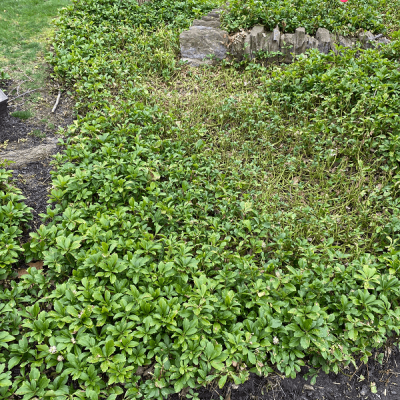Burkholder Plant Health Care Year in Review
As existing clients of Burkholder Plant Health Care, we know that you are invested in your landscape…both financially and emotionally. Motivation for this investment may be strictly practical (contribution to property value), aesthetic (appreciation of the beauty of plants), ecological (contribution to the biome), or competitive (well…neighbors). More likely, motivation to enhance and care for landscapes comes from a combination of these factors, along with many others. Without regard to underlying motivation, the fact is that an established and cared-for landscape returns on the investment. With this in mind, we provide a Burkholder Plant Health Care Year in Review to explore some of the previous year’s PHC concerns.
The most advanced, durable, and overlooked component of landscape plant maintenance is biological care: maintaining soil nutrition, control of insect and disease pests, and management of plant structure and physiology. In today’s environment, biological care is critical in maintaining longevity, vigor, and beauty in landscape plants, combatting invasive and explosive pests, compensating for depletion of soil nutrients, and correcting losses in plant resiliency.
Why Burkholder Plant Health Care?
At Burkholder Plant Health Care, our goal is to provide the region’s highest level of biological and structural care for your landscape plants. Toward this, we are staffed with experienced, certified professional technical specialists and equipped with state-of-the-art equipment, management strategies, and treatment materials. In our program, a critical element of effective protection of landscape plants is keeping abreast of dynamic growing conditions, both in terms of seasonal weather patterns that contribute to plant stress and a constantly changing complex of insect and disease pests.
What Happened in 2024?
Below is the Burkholder Plant Health Care Year in Review, where you can learn about the top issues we saw and treated for this year in Main Line landscapes.
Climatic Conditions
The 2024 growing season in the mid-Atlantic region was defined by prolonged periods of extreme heat followed by a profound lack of rainfall through fall.
In Malvern, we recorded 32 days over 90 degrees from June 1 to August 31, meaning that daily highs exceeded 90 degrees more than 1/3 of the time through the summer growing months. During these months, rainfall kept pace with average, and established plants managed the environmental stresses fairly well.
However, the bottom dropped out of the rainfall rates in September and October, with less than 1 inch of rain recorded through the last 2 months of the growing season. For reference, landscape plants in our area thrive with an average of roughly 1 inch of rainfall per week, ideally spread across 2-3 smaller rain events. With depleted late-season soil moisture in 2024, many landscape plants went into early dormancy to preserve available water: lots of wilting and browning plants, sparse fall blossoms, and early leaf-drop in deciduous plants.
This lack of late-season soil moisture also sets up broadleaf evergreen landscape plants (laurel, rhododendron, holly, boxwood, pieris, magnolia) for extensive winter damage. The combined effects of fall drought and cold windy winter will be seen in these plants over the next few weeks.
Insect and Disease Pests
In addition to challenging weather conditions, there were a number of insect and disease pests that caused new or disproportionate damage to landscape plants in 2024:
Notable Plant Health Care Issues in 2024
Southern Blight
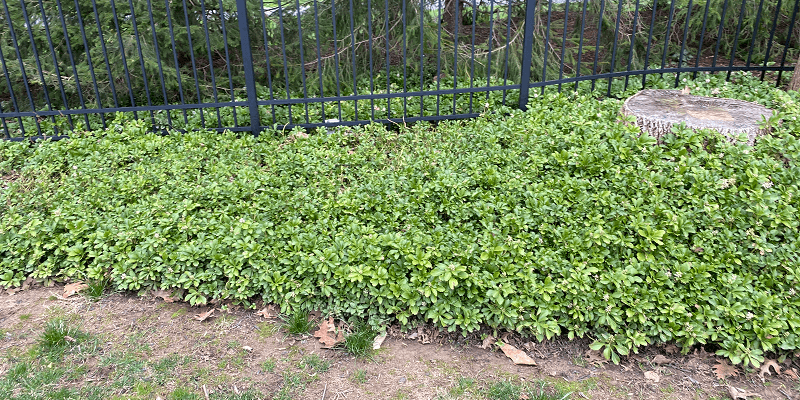
In May of 2024, we began to see signs of a new plant disease in this area: structural collapse of hosta, liriope, hydrangea, and phlox, among others.
- Structural symptoms were accompanied by clear lesions and watersoaking at the soil line, breaking down plants’ ability to stand up. Further examination exposed small, tan granules embedded among stems and white fungal growths on soil and stems, clearly indicative of southern blight, Sclerotium (=Athelia) rolfsii.
- As its name suggests, this is traditionally a warmer-climate problem, severely damaging agricultural crops and ornamental plants in southern states. In our area, it appears that this disease will be worst following a mild winter and tends to take hold in soils with highly acidic pH. Given these two factors, we are hopeful that infections will not spread in 2025.
- When identified, this disease can be controlled with a specific fungicide program, aggressively targeting the root collar and surrounding soil of individual plants.
- This disease is primarily a risk in late spring; however, some of the damage seen in pachysandra (noted below) in late fall 2024 can be attributed to this disease.
White Prunicola Scale

This insect is severely damaging on cherry laurel, skip laurel, and flowering cherry/plum.
- Also infests privet, lilac, boxwood, and holly.
- Three generations per year in this area, with third (September) generation highly explosive.
- Creates a white fuzzy coating on plant stems and causes significant yellowing/branch death when populations are high.
Boxwood Complex: Leafminer, Psyllid, Spider Mite, Volutella Blight
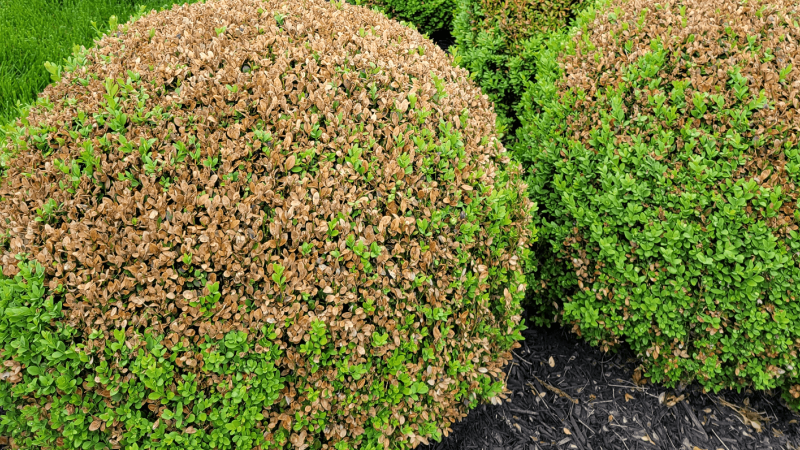
Currently, the most damaging pest in boxwoods remains boxwood leafminer, a fly larva that feeds between the leaf layers, killing individual leaves. Heavy populations cause extensive browning and leaf-drop.
- Along with leafminer, psyllid and spider mites were very active this year, contributing to an overall decline in boxw ood quality and appearance region-wide.
- Several diseases also affect boxwoods, and the most common is volutella blight, which is most damaging on plants that are weakened by other pests or environmental conditions.
Rust Mite/Eriophyid Mite

Eriophyid rust mites are creating extensive damage on privet, cypress, hemlock, and spruce, and they are so tiny that they are exceptionally hard to detect before damage occurs.
- Another species of eriophyid mite causes extensive damage to roses by spreading rose rosette virus.
- This pest complex has stayed under the radar in landscape plants for many years due to difficulty of detection, but the tools are in place now to control on privet and conifers, and we have seen exceptional recovery of mite-damaged plants.
Invasive Weeds

The following species of weeds are invasive to Pennsylvania and can harm homeowner’s landscapes.
- Canada Thistle (shown above)
- Bindweed
- False Buttercup/Celandine
- Yellow Nutsedge
Late-Season Pachysandra Collapse
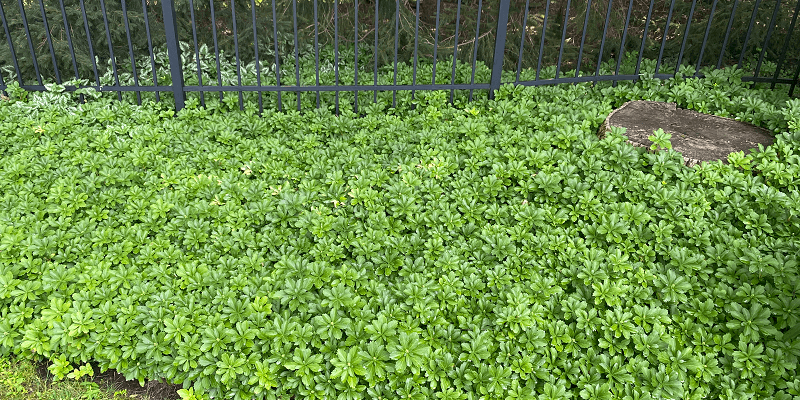
In fall of 2024, there was a widespread collapse of pachysandra in this area, which we are attributing to a combination of abiotic and biotic stresses:
- September-October drought
- Fall onset of volutella blight
- Late-season population growth of euonymus scale
- New infections in 2024 with southern blight
- On properties where diagnosis was early enough, fall fungicide applications were made to halt late-season disease progression. We are hopeful that these proactive treatments will position declining pachysandra beds for rapid recovery this spring.
- Properties that experienced collapse of pachysandra but were not treated in fall of 2024 will need to undergo a systematic treatment program to halt disease progression, get any invading insect pests under control, and improve soil conditions for rapid plant growth and re-colonization.
Deer Browse
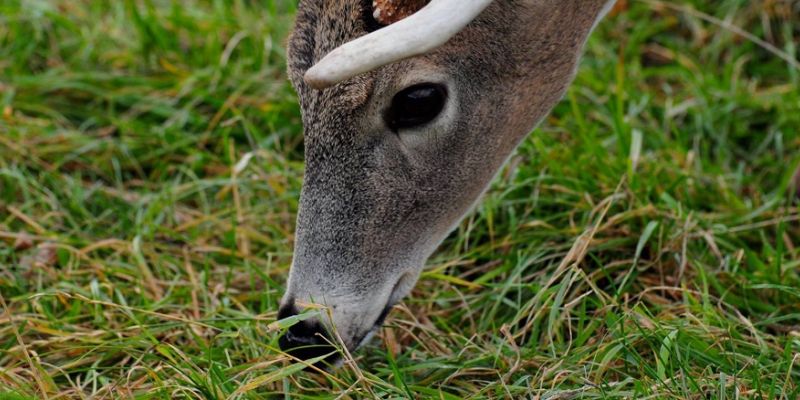
In this area, deer are likely the greatest hurdle to establishing new landscape plants, maintaining attractive architecture on mature plants, and ensuring full flowering in ornamental plants that are also feeding targets for deer.
Plants that just get wiped out without protection:
- Hosta
- Evergreen Azalea
- Rhododendron (particularly PJM)
- Wintercreeper
- Rose
- Hydrangea
- Flowering Cherry/Plum/Apple
- Tulip
Even with clear preferences for some plants, feeding damage from deer extends deep into the list of local landscape plant species.
- It appears that fall drought in 2024 had a profound impact on wild/woodland food resources for deer in this area, with many conventional food resources losing foliage and fruit load earlier in the fall. This has led to a marked increase in the amount of feeding damage inflicted by deer to landscape plants this winter and early spring.
- Starting in 2022 and continuously revised through 2024, we decided to take the lead and began formulating our own blend of deer repellent, combining effects of feeding repellents, predator signals, and behavioral deterrents. With a strict re-treatment interval of 60 days, we have had good to excellent results with spray-on repellents through both spring/summer and fall/winter.
Soil Conditions/Soil Nutrition

Two critical factors for healthy landscape plants are soil moisture and nutrition. Optimal soil moisture and nutrient levels ensure healthy, resilient plants. Burkholder Plant Health Care samples soil on participating properties and applies prescription soil amendments each season for healthy plant growth.
Soil Moisture
For most landscape plants, ideal soil moisture levels range from 20%-60%, depending on specifics of soil type and plant species, with a good middle ground of 40%.
- Prolonged soil moisture rates of less than 20% or greater than 60% are equally damaging to root systems, and calibrating a landscape watering routine can be exceptionally complex.
- To simplify watering recommendations, we will continue to monitor soil moisture rates on client properties at each field visit.
Soil Nutrition
Soil nutrition is an absolutely critical consideration in landscape plant health…without adequate availability of soil macronutrients (nitrogen, phosphorus, potassium), micronutrients, and foundational chemistry and structure (pH, porosity), plants are not capable of reaching full maturity, health, or vigor. Poor soil conditions also predispose plants to pest problems and damage from environmental stress.
Commonly overlooked, correction and management of soil nutrients can be the difference between sustainably healthy plants and a biological maintenance headache.
At Burkholder Plant Health Care, soil chemistry is sampled on participating properties every 3 years, and prescription soil amendments are applied in spring (March) and fall (October) of each growing season.
Notable Observations by Burkholder Plant Health Care
Our Burkholder Plant Health Care Year in Review would be incomplete without mentioning a few findings by our team. These include:
Southern Blight
In May of 2024, we were called out to a property in West Chester, PA that was exhibiting strange symptoms in fast-growing hostas: plants were reaching full size, then succulent leaves would break from the root collar and fall to the ground, looking like they had been trampled. Further examination revealed similar symptoms in liriope and hydrangea on this same property, then phlox on a second property, then daylily and sedum on a third property, then pachysandra on multiple properties. Submitted plant samples confirmed our suspicion of a late-spring outbreak of southern blight, a potentially devastating disease of over 500 plant species. Early diagnosis and treatment of this disease is a clear priority of our plant health care program in spring of 2025.
Aster Yellows
Aster yellows is a systemic plant disease caused by a bacteria-like group of pathogens called phytoplasma. As with many bacterial/phytoplasma plant diseases, aster yellows is spread by insects, which feed on infected plants and spread the disease-causing microorganisms to uninfected plants. This disease has a large host range, from vegetables to weeds and from flowers to landscape ornamentals. In 2024, we identified aster yellows in twig dogwoods (dogwood witches’ broom) and on Annabelle and Limelight hydrangeas (flower deformations). In general, this disease is not considered treatable, but we are attempting both cultural control methods (sanitation pruning) and soil/root care to stimulate the plants’ natural defenses.
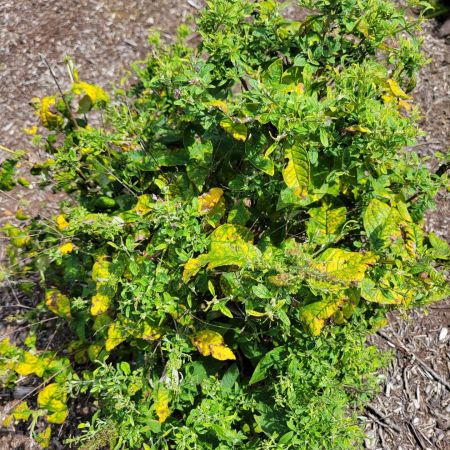
Beech Leaf Disease
In fall of 2024, field staff at Burkholder Plant Health Care undertook a review of existing literature regarding potential control methods for the new, fatal, invasive disease of beech trees: beech leaf disease. From review, we have hypothesized that a novel approach to management may have long-term effects in preserving beech trees in woodlands and landscapes, and have since partnered with a national manufacturer and distributor of plant health care products to test our hypothesis in the field. Stay tuned for updates!
Look Back at The Previous Burkholder PHC Years in Review
Contact Burkholder PHC for Exceptional Treatment of Plant Care Issues
If you are a current or past client of Burkholder Plant Health Care, thank you for trusting us with the care of the structure and biology of your landscape plants. If you have yet to experience plant health care services on your property and are interested in an assessment of the condition of your landscape plants, just let me know (starker@burkholderphc.com). All of our initial evaluations, sampling, and diagnostics are free for current or past clients of Burkholder Brothers. For more information about the Burkholder Plant Health Care Year in Review, give us a call.


